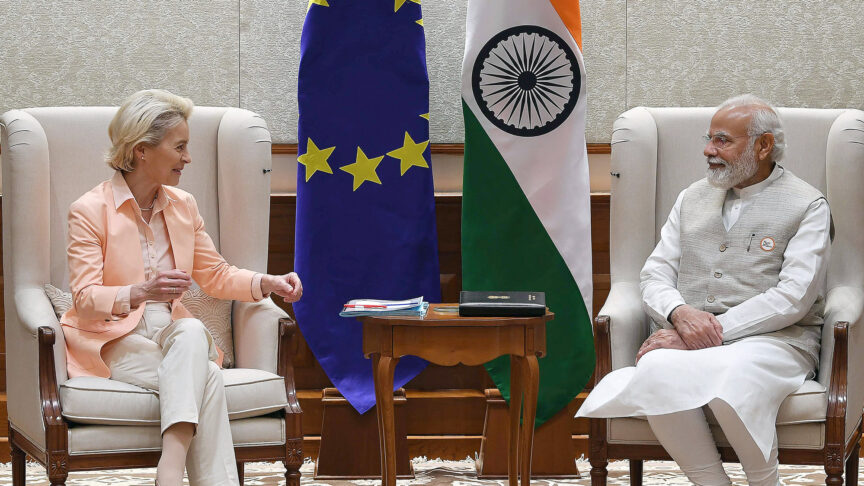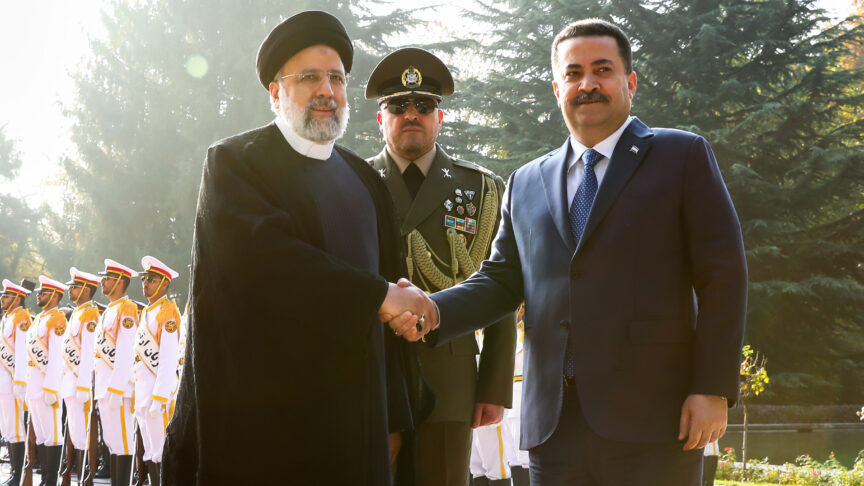Kaliningrad: Russia’s stagnant enclave
On 1 April, Kaliningrad’s special economic zone privileges expire, meaning that it will lose its right to duty-free trade and will have to stand on its own two feet.
On 1 April 2016, Kaliningrad’s special economic zone (SEZ) privileges expire, meaning that it will lose its right to duty-free trade and will have to stand on its own two feet. How will the Russian exclave fare on its own – territorially detached from mainland Russia, and ideologically excluded from mainland Europe?
After the collapse of the Soviet Union, Kaliningrad was perceived by many as the “black hole of Europe”. But when Vladimir Putin came to power, the outlook improved, mainly due to the steady economic growth the president was able to deliver. Thanks to its unique situation as a Russian exclave/EU enclave, it was hoped that Kaliningrad could boost dialogue between Russia and the EU. Dmitry Trenin, director of the Carnegie Moscow Center, went so far as to say that “Kaliningrad is nothing less than a natural laboratory for EU-Russia relations”.
Kaliningrad’s social and economic development was and is dependent on economic integration into the Baltic Sea region. But Moscow’s unfamiliarity with the concept of decentralisation means that it has been plagued by fears that the region might secede. Instead of achieving the much hoped for regional integration, Kaliningrad has found itself doubly excluded from major modernisation processes in both Europe and Russia. Moreover, the crises in Ukraine and in Syria, coupled with Moscow’s growing anti-Western stance, have transformed Kaliningrad into Russia’s “fortress on the Baltic”, to a visible extent replicating its post-1945 fate.
Western hopes that Kaliningrad might become the “Russian Gdansk” – a centre of anti-“United Russia” and anti-Putin sentiment – have been dashed. Kaliningrad is not Gdansk or Kyiv, and the desire for a better life does not necessarily equate to a desire to adopt European values.
Nikolay Tsukanov, the governor of Kaliningrad, warned in 2014 that “Western secret services are determined to create another Maidan in Kaliningrad by sending activists through Poland and Lithuania”. Kaliningrad is becoming a “new battlefield” in the values arena as well as the military one.
Kaliningrad appears doomed to replay its Soviet role as a Russian fortress in Europe. How has this region – which once hoped to become the Baltic’s Hong Kong – found itself in this position again?
The road to economic failure
There are three elements to consider with regards to Kaliningrad’s isolation and economic malaise, all of which are rooted in Soviet-era practices. First, is endemic corruption, then its special system of privileges, and thirdly the specific “Kaliningrad identity”.
First, ever since the collapse of the Soviet Union, there have been huge corruption scandals in Kaliningrad – huge even by Russian standards. This started with the infamous “Dresdner Bank affair”, in which money was laundered through the bank using artificially inflated interest rates, to the most recent scandal surrounding the current governor over fraud in large infrastructural projects, including in the construction of the 2018 FIFA World Cup stadium.
Secondly, the system of privileges developed during the prosperous 2000s was deliberately conceived to eradicate any nascent competition and limit cross-border cooperation with other Baltic countries. These privileges can be divided between those gained pre-2006, allowing it to trade tax-free and pay no duties to Russia, and those gained in 2006.
This leads us to the last and perhaps most crucial element – the “Kaliningrad identity”. This specific vision claims that Kaliningrad is unique and ought to be provided for in terms of security (because it is “encircled” by Western countries) and its economy (as successful economic development is made much more difficult due to this “encirclement”).
But the real issues facing Kaliningrad now are not military or political, they are economic.
Withdrawal of SEZ status
The expiration of economic privileges on 1 April has already been dubbed “Problem 2016”. The rollback of the SEZ status will mean that local producers will lose the right to duty free imports and exports to and from members of the European Union. This problem is likely to affect at least 785 local companies that currently employ 24 percent of the local workforce and is set to directly affect about one third of the local population.
Kaliningrad’s SEZ was set up in 2006, partly to support the new governor who was hand-picked by Putin. It was a high-profile initiative which seems to have been designed to thwart foreign investment rather than attract it. This project gave locals privileges such as tax-free status for the first six years and 50 percent off tax over the next six years along with a decade-long “provisional period”. But it has failed to deliver the results anticipated, especially so in comparison with the neighbouring Klaipeda SEZ in Lithuania and Polish economic progress.
In the first two years of the SEZ, there was some illusion of economic growth, which was largely achieved by re-importing European goods to the Russian market, benefitting from huge financial subsidies from Moscow, and crude money laundering practices. Nonetheless, Kaliningrad still remains a leader in “grey zone” economics with 10 percent of its population working in the black market. Moreover, the fact that in 2013 over 50 percent of FDI came from Lithuania, Cyprus, and the Netherlands seems unusual, because these countries are widely considered to be “tax havens”.
Government ministers Alexey Ulyukaev and Sergei Stepashin have been blunt about the failure of Kaliningrad. According to them, it was predestined to fail, not least due to Russia’s subsequent accession to the WTO. This rendered the SEZ custom duties regime and “provisional period” obsolete. But the bigger problem was undoubtedly the epic levels of corruption and bribery (including the “double yoke” exercised by the local custom services), very low levels of productivity (5–20 percent of the German level), a distinct lack of qualified labour resources, and a minuscule level of foreign direct investment (FDI) in the local economy. All this discouraged any would-be investors and meant that Moscow had to keep the local economy functioning itself.
Keeping Kaliningrad afloat
The Kremlin has promised an additional 66 billion roubles to compensate for the loss of the SEZ this April (although, given that the rouble is in free-fall and taking into account that most materials are still imported, this may not be as generous as it seems). Indeed, the head of the Association of Foreign Investors in Kaliningrad Oblast Stefano Vlakhovych has said the local businesses would actually need $300m (20 billion roubles) within the first 40 – 45 days alone to bridge the gap to the moment when subsidies become available. This is unlikely to materialise given the current economic climate. In which case the outlook is pretty bleak – history shows that in times of financial crisis, Kaliningrad is one of the most severely affected Russian regions as it is an enclave and the locals are more used to measuring their quality of life by European (rather than Russian) standards.
Numerous initiatives that were put into place, such as the Euroregion initiative, could have created strong links with neighbours so as to dispel old phobias and foster cooperation between Kaliningrad and its regional partners. Unfortunately this opportunity was missed. For these initiatives to work, Kaliningrad should have been granted greater autonomy in foreign contacts – precisely what Moscow did not want to give to the region, in order for the Russian people there to remain isolated and subjected to the Kremlin’s anti-Western propaganda. The EU’s sanctions on Russia have only discouraged potential European investors even further.
So this year will be particularly crucial for Kaliningrad. No-one knows what will happen after the “Problem 2016” deadline passes on 1 April. Everything will depend on the amount of subsidies that Moscow is willing to provide. And this, in turn, depends on Russia’s financial predicaments and how it chooses to deal with them. Things might yet get worse in 2017 if oil prices fail to rebound. The local economy will have to start functioning under new regulations and deal with dwindling financial support from Moscow. This might lead to a lower standard of living, job losses, and growing unrest. After all, Kaliningrad is 17th in the list of Russian regions in terms of protests/protest potential. Indeed, Kaliningrad is in danger of becoming one of the first Russian regions where the famous dispute between the TV and the fridge (a common saying referring the power of propaganda over living conditions) might result in the victory of the latter.
There is however another scenario. If Moscow and the local elites can figure out a way of forestalling a breakdown of the quality of life, the region may avoid mass protests. But with the situation as it is, and the future outlook seeming bleak, Kaliningrad could face a mass exodus from a region which continues to be ideologically, economically, and politically detached from its neighbours and Russia.
Sergey Sukhankin is a native of Kaliningrad currently working on his PhD at the Autonomous University of Barcelona (UAB)and is an Associate Expert at the International Centre for Policy Studies in Kyiv.
The European Council on Foreign Relations does not take collective positions. ECFR publications only represent the views of their individual authors.


